Alberta winters are notoriously cruel. While that might be an exaggeration, our winters are still no joke. We need heat!
The earliest furnaces used wood and coal to heat homes and buildings. As time passed, fossil fuels made it more affordable and efficient to meet increasing heating needs. Better technology led to more heating options, including electric and gas furnaces.
So which is the best option for your home today? Alberta is a whirlwind of different seasons, often intermingling with each other. And you need to prepare with the best furnace system available, and Action Furnace is here to help you make the right choice.
What’s The Difference?
Gas furnaces heat your home using natural gas. The furnace is connected to a thermostat which signals the unit to turn on and off. When engaged, burning gas warms the air, and a heat exchanger powers the blower, distributing heat throughout your home.
Electric furnaces operate like their gas-powered counterparts but rely on electrically heated resistance coils or tubing instead of burners to create heat.
See also: How to Determine the Right Type & Size Furnace For Your Home
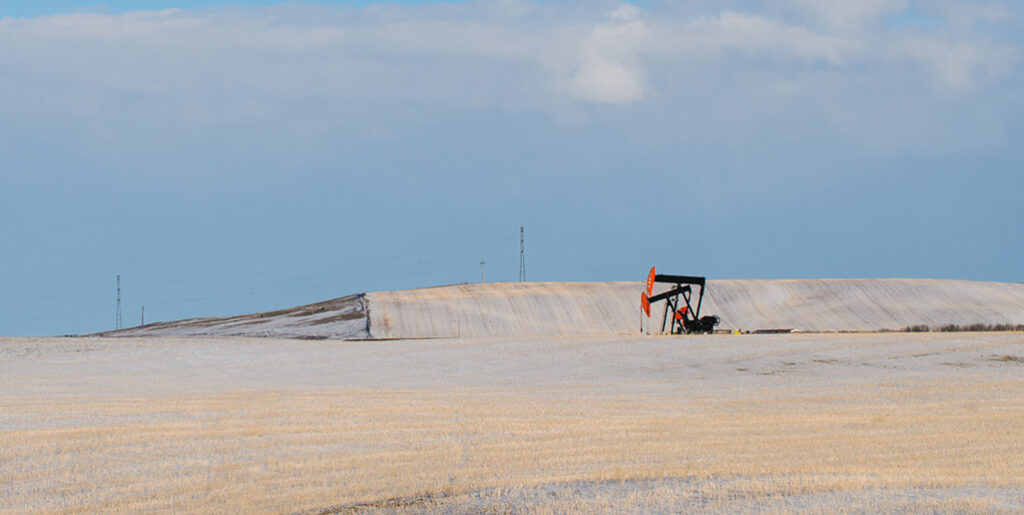
Heating Costs in Alberta
Over the past few years, the price of natural gas and electricity has unfortunately skyrocketed, leading Albertan families to look for ways to save money on their heating bills.
To mitigate price increases, many utility companies are allowing their customers to switch to fixed-rate plans or offer payment plans to help to cushion the blow.
Many energy experts currently point to natural gas as the most cost-effective way to heat your home. Still, it’s important to know that region and location are significant factors.
In Canada, the price of energy is highly influenced by what resources are available in which region. For example, electricity tends to be cheaper in hydro-rich provinces such as Quebec and BC. While natural gas tends to be more affordable in natural gas-rich provinces like Alberta.
Typically in Alberta, natural gas has a lower heating cost than electricity.
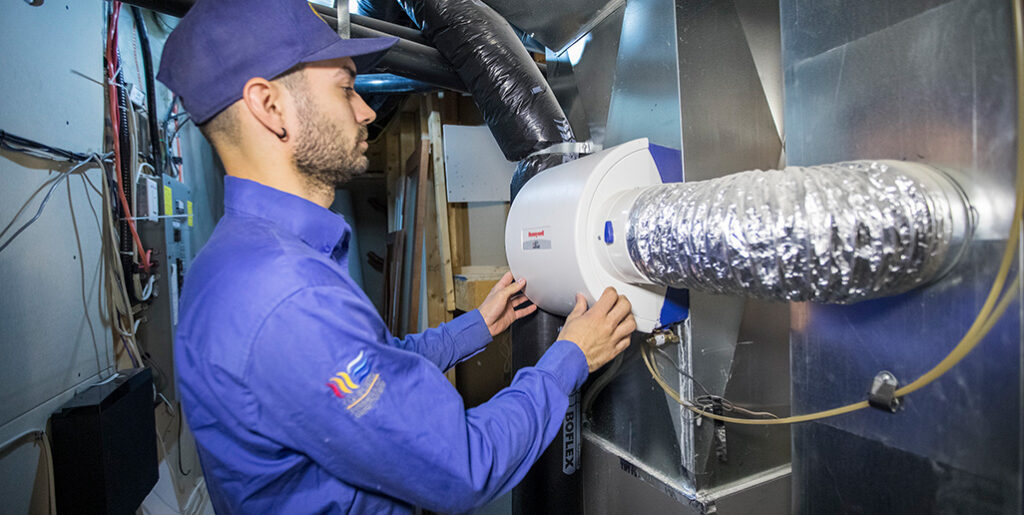
Cost & Installation
The cost of the unit itself is the first thing to consider when purchasing a new furnace. New furnaces cost upwards of a couple thousand dollars, including installation, so it’s best to know your options before getting started.
Gas furnaces are more expensive and require professional installation. Connections must be sealed properly to prevent harmful and combustible gases from leaking. Typically, gas furnaces run up a bill between $3,000 and $7,000, depending on the size and features.
Electric furnaces do not have the same risks regarding installations or connections and are usually cheaper to install. It is still recommended to get a professional installation because of the wiring required, other safety risks, and potential warranty conditions.
The $2,000 to $4,000 price tag for an electric furnace can make this an economical choice for smaller homes or first-time homeowners.
Heating & Efficiency
Both electrical and gas-powered furnaces have made great strides since the early days of home heating. But the lower equipment costs for electric furnaces are offset by performance limitations in cold climates.
The main reason Albertans choose gas-powered furnaces is that they heat faster than electric furnaces. The catch is that gas-powered furnaces are less efficient than electric ones, although the gap is tightening. Modern high-efficiency furnaces can reach an AFUE (annual fuel utilization efficiency) of 98.5%.
Most modern electric furnaces operate at almost 100% AFUE. However, the main drawback is that they take more time to heat your home, making them less optimal for snap colds that plague Alberta during the winter.
Another heating equipment type to consider is heat pumps. Heat pumps are another electric heating source; they operate the same way an air conditioner does, but in reverse. These are not ideal in sub-zero climates due to limited heating power.
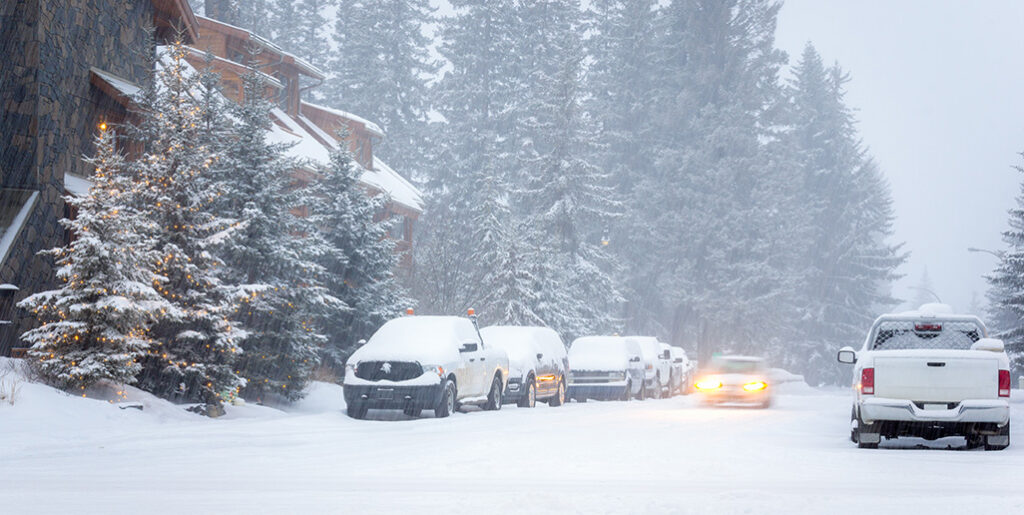
Climate Considerations
Alberta’s terrain hosts some of the world’s best winter activities, but it also produces some of the deepest and coldest winters in North America.
It’s normal for residents at the foot of the Rocky Mountains to experience warm wind Chinooks and sudden temperature drops. It’s reasonable to turn down your thermostat when the outside temperature jumps 15 degrees. But heating your home back up 12 hours later will take longer with an electric furnace.
Managing Humidity Inside Your Home
When air is heated by a furnace, it lowers the relative humidity inside your home. Unfortunately, Alberta’s winters are dry enough in the first place!
Whether you’re using an electric or gas powered furnace, dry indoor air can be irritating.
Humidifiers are a great way to battle the dry Albertan climate, keeping you more comfortable and protecting your furniture and belongings. These can be installed directly into your heating system and increase humidity throughout your home.
See also: Do I Need a Humidifier In My Home
Go for a Gas Furnace, Alberta!
Going with a gas furnace is the right choice for homeowners in Alberta. Cold temperatures into the -30s and unpredictable temperature swings call for the power of natural gas heating.
Electric furnaces are easier and cheaper to install. But the higher equipment and installation costs of a gas furnace can be offset within a few years of use. Heating with gas is almost always more favourable to your pocketbook every month.
If your current furnace is giving you trouble and has been installed for a decade or more, it’s probably time to upgrade. But what can you expect if you replace your current heating system with a high-efficiency natural gas model, and how does this option compare to your other choices?
Installing a new furnace with a higher efficiency rating has numerous benefits—including less noise, a lower risk of emergency breakdowns, and more affordable monthly heating bills. Learn more about these advantages from the home comfort team at Action Furnace below, plus the costs and timelines you should anticipate when buying one for your home.
See also: Electric vs Gas Furnace: Which Is Best For Albertans?
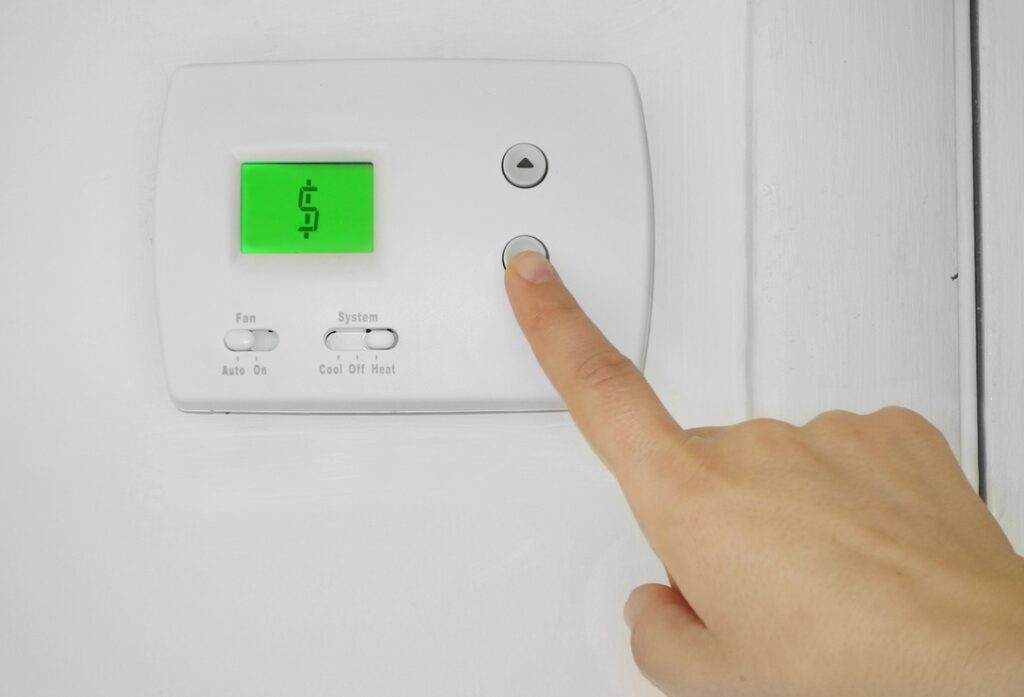
Lower Gas Bills
High-efficiency natural gas furnaces use less fuel to produce heat, which means you pay less for comfort in cold weather. The exact amount you’ll save depends on various factors, including:
- The efficiency of your old furnace
- The efficiency of the new furnace
- Current natural gas prices
- Your home’s insulation, square footage, ceiling height, and number of occupants
See also: 10 Tips To Lower Your Energy Bill
As a ballpark estimate, most homeowners can expect to save around 15-25% on their natural gas costs with a high-efficiency furnace. This means if you’re currently spending $120 per month on heating, you could save $18-$30 each month.
Example:
Let’s say your old furnace has an efficiency rating of 80% and you’re spending $120 a month on natural gas. If you upgrade to a high-efficiency furnace with a 95% efficiency rating, you’ll improve your efficiency by 18.75% (15% of 80 is 12, and 95-80=15, so 15/80 = 18.75%). This means your new heating bill would be about $97.50 (120 – 18.75% of 120), saving you $22.50 each month.
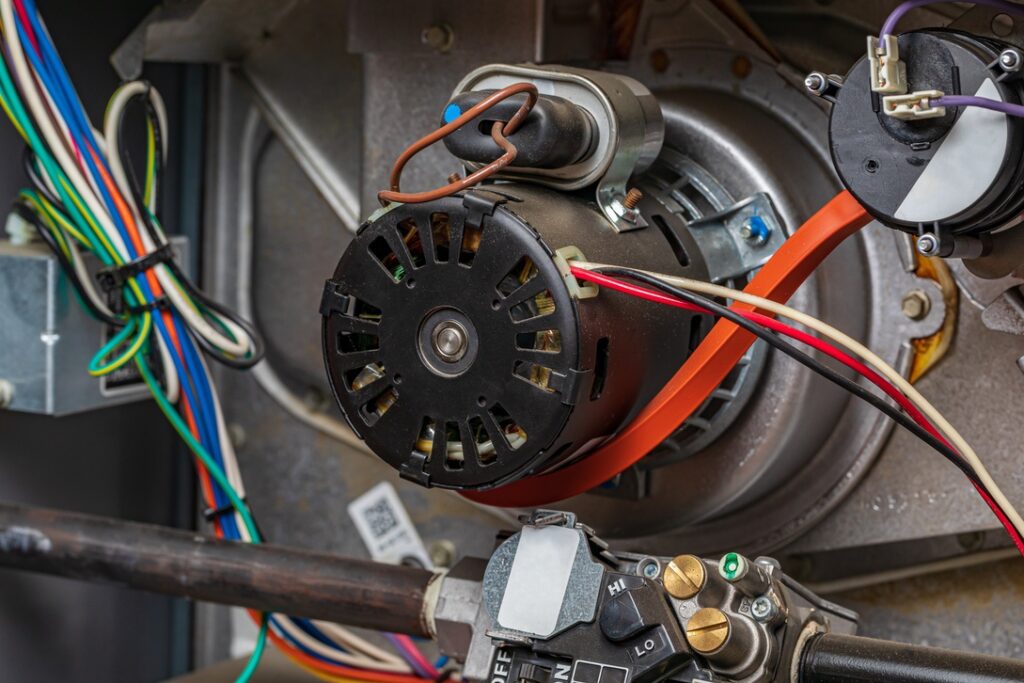
Less Noise
Part of the reason that high-efficiency furnaces use less energy is that the moving parts move much more smoothly. An added benefit of this is that newer heating systems make a lot less noise!
You’ve probably been distracted more than once by the loud humming your old furnace makes when it kicks on—but high-efficiency furnaces are like the secret agents of the HVAC world. They’re less-invasive, less noticeable, and the work they do in the background helps keep your home a comfortable and welcoming environment.
Superior Technology
High-efficiency natural gas furnaces achieve the benefits above by using modern technology not available in older models. Here are some of the key features you can look forward to when purchasing a new natural gas furnace from us:
Electronic Ignition
One of the best things about high-efficiency furnaces is their electronic ignition technology, which eliminates the need for a pilot light. The main advantage of this technology is that you save energy because the pilot light isn’t constantly burning.
Automatic Vent Dampers
In addition to electronic ignition technology, high-efficiency natural gas furnaces are also made with automatic vent dampers. These help create better thermal efficiency by shutting the flue pipe when the furnace is not in use—trapping and storing leftover heat so that it does not escape through your vents or chimney.
Automatic vent dampers give new furnaces a modest boost in energy efficiency, helping lower running costs. It’s not a huge difference, but it does contribute to your overall energy savings.
Multi-Stage Heating
The motors older furnaces used to move air through your ducts had two speeds: on or off. But the variable-speed motors that come in some new models are more like an automatic transmission on a car.
These motors adjust their speed to better control the desired power. The lower the speed, the less energy they use (and the higher their efficiency). This means newer furnaces don’t need to run at full blast whenever a little more heat is needed.
Dual Heat Exchangers
A heat exchanger is the part of your furnace that mixes heated air with the cooler air entering the system from your supply vents until it reaches the temperature your thermostat is set to.
This air is then recirculated through your ducts and into the rooms of your home via the return vents, creating a warm and cozy space.
Having a secondary heat exchanger allows the furnace to capture heat that would normally be lost by units with just one. This is a key part of how new gas furnaces are able to have substantially higher energy efficiency ratings than old ones.
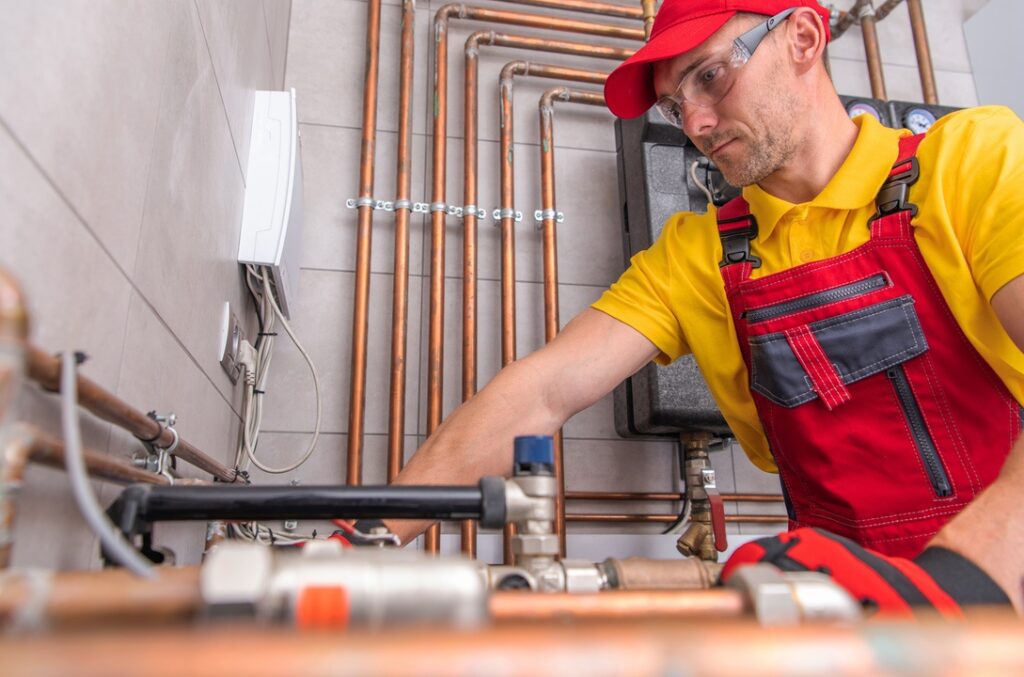
Frequently Asked Questions About High-Efficiency Gas Furnaces
How Is Efficiency Measured for Natural Gas Furnaces?
The Annual Fuel Utilization Efficiency (AFUE) rating is the standard measure of heating efficiency used to evaluate furnaces. Essentially, AFUE measures how well a furnace converts fuel into heat—in other words, how much gas does a furnace use to heat a home?
Modern high-efficiency natural gas furnaces must have an AFUE rating of 90% or higher, although the most advanced units have ratings up to 98.5%! Conversely, many older furnaces have efficiency ratings of only 60%. That means 40% of the energy they use is not helping to heat your home, even though you’re still paying for it every month.
How Do High-Efficiency Gas Furnaces Compare to Oil or Electric Models?
If you’re weighing the decision to buy a new gas furnace against the choice of an oil or electric model, here are some factors to consider.
- Cost: Natural gas furnaces often have lower operational costs than oil or electric models due to the lower cost of natural gas.
- Maintenance: Gas furnaces tend to require less maintenance than oil furnaces but might need more regular check-ups than electric models.
- Environmental Impact: Natural gas furnaces emit fewer greenhouse gasses compared to oil furnaces. Electric furnaces can be cleaner, but only if the electricity is generated from renewable sources.
- Efficiency: High-efficiency gas furnaces can achieve efficiency ratings of up to 98%, compared to 80-90% for oil. While electric furnaces are technically 100% efficient, this rarely translates into utility savings since electricity is significantly more expensive than natural gas in Alberta.
How Much Does Installing a High-Efficiency Gas Furnace Cost?
The cost of installing a high-efficiency gas furnace can vary significantly based on the specific model and the complexity of the installation. However, you should expect to spend at least $6,000 – $10,000 for a new unit.
For a more precise quote on your new furnace, give our team a call! We’ll ask you a few quick questions about your home and heating needs, then recommend some options and tell you how much you can expect to spend on each one.
How Long Does Installing a High-Efficiency Gas Furnace Take?
On average, having our technicians install a high-efficiency gas furnace can take anywhere from 4-8 hours. This timeline may be longer if old equipment needs to be removed or if modifications to your home’s infrastructure are needed. We’ll give you a precise idea of what to expect when you schedule your installation with us, and let you know if we find anything that could require more time.
How Often Does a New High-Efficiency Gas Furnace Need Maintenance?
High-efficiency gas furnaces should typically be serviced at least once a year. Here are a few tasks that our HVAC professionals perform during every furnace tune-up:
- Inspecting the Heat Exchanger: To check for cracks or corrosion that could lead to a carbon monoxide leak.
- Cleaning and Checking the Burners: This ensures they’re working properly and providing efficient combustion.
- Checking the Fan Switch: To ensure it’s cycling properly for optimal heat control.
- Lubricating Motors and Bearings: Reduces friction and helps equipment run smoothly.
- Checking the Safety Controls and Startup Cycle: Ensures the furnace is operating safely and properly.
- Changing the Air Filter: A clean air filter improves efficiency and air quality.
- Checking and Calibrating the Thermostat: Ensures accurate and efficient temperature control.
Find the Furnace That’s Best for Your Home
Finding the right new furnace can feel challenging because it’s an important investment. But getting advice from experienced professionals can make things a lot easier.
Buying a furnace that will be energy-efficient, quiet, and reliable in your home is always easier with the guidance of an HVAC professional. Get in touch with Action Furnace for information on the latest high-efficiency furnaces and find out how we can help lower your heating bills.
